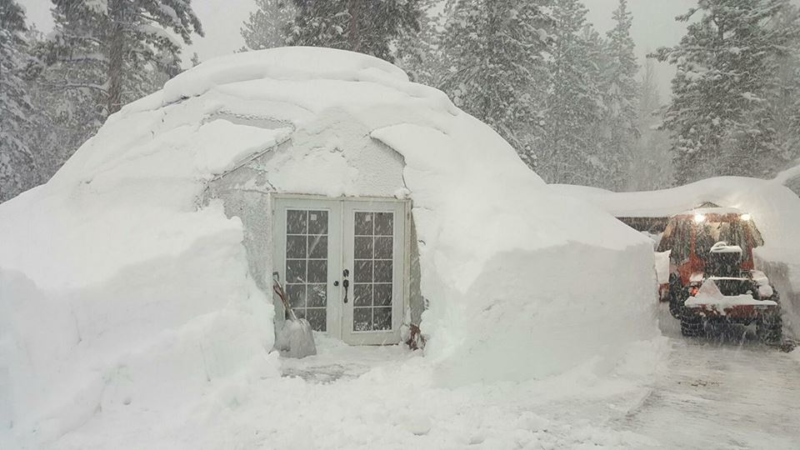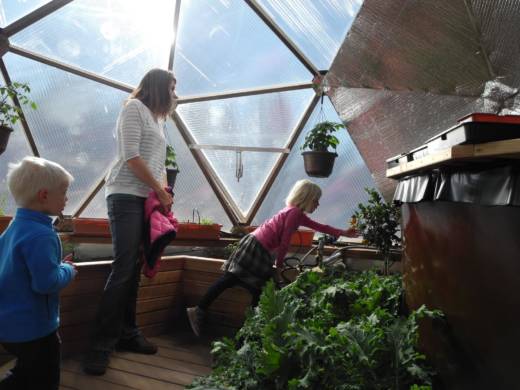It may have been a record snow year in the Sierra, but that hasn’t stopped locals from growing their own produce. In addition to the usual covered garden beds, some ambitious Tahoe gardeners have opted for a more engineered option: the Sierra Growing Dome.
Designed in partnership with the Tahoe Food Hub and manufactured by Colorado-based Growing Spaces, the dome comes in a variety of sizes and has been engineered to withstand heavy snow loads. The geodesic greenhouses look a bit like glass golf balls and require no external heat source, which makes them fairly economical to operate. Instead of heating and cooling equipment, the domes’ temperatures are moderated via the sun, a large tank of water and some ingenious vents that keep things cool in the summer and warm in the winter.
At around $25,000, the domes run the risk of being a luxury that only wealthy foodies can afford for individual use.
The dome at the Tahoe Food Hub, however, also serves as the organization’s agroecology center, where experts share a variety of tips for growing food in alpine climates. The food hub connects local farmers with restaurants, schools and hospitals in the region in an effort to reduce food miles. Executive director Susie Sutphin said she hopes some local cities and organizations might consider taking on a dome. “It would make a lot of sense for some of the ski resorts up here. They’d be able to grow some of their own produce, which would reduce the amount of stuff they need to have trucked in and would also provide really fresh ingredients for their restaurants,” she said. “I could see one of the towns maybe putting one up, too, and they’re great for schools.”

In fact, one local school, Sierra House Elementary in South Lake Tahoe, raised enough via donations and grants to buy not one but two domes, and start an ambitious gardening program that provides fresh produce twice per week to its students, two-thirds of whom are on the free and reduced lunch program.

